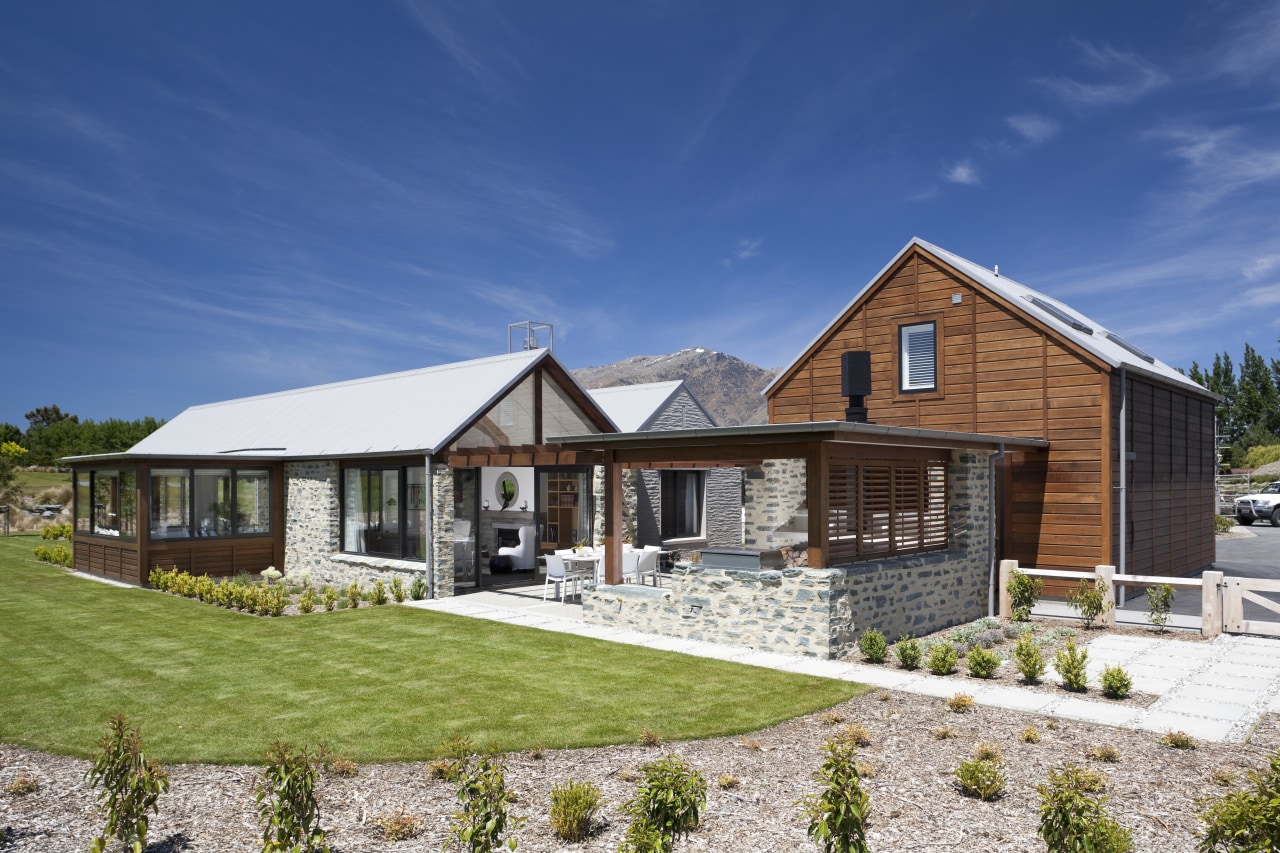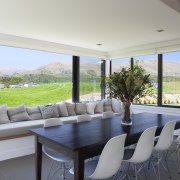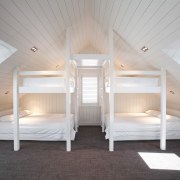Local identity
The distinctive profile and materials of this new house evoke a sense of history they recall the traditional charm and character of a Central Otago goldminer's cottage
Expansive views are usually par for the course for a rural property, but creating a country retreat doesn't have to involve isolation. The architect of this house one of a group of new properties adjacent to the Millbrook golf course in Central Otago designed the house to open up to the view and the immediate neighbourhood.
Francis Whitaker of Mason and Wales Architects says many existing buildings in the area are very enclosed.
"We wanted to create a much more open layout. There needed to be a social aspect to the design, to encourage the idea of a community where people could drop in, say hello and feel welcome, comfortable and relaxed."
Providing a strong connection with the outdoors was a key factor in achieving this. So, too was the key architectural influence the house references rural barns in the district and the original stone cottages built by goldminers in the 1800s.
"These cottages have a simplicity and charm all of their own," Whitaker says. "The architecture evokes a sense of local history, and the building is especially well suited to the dry Central Otago climate."
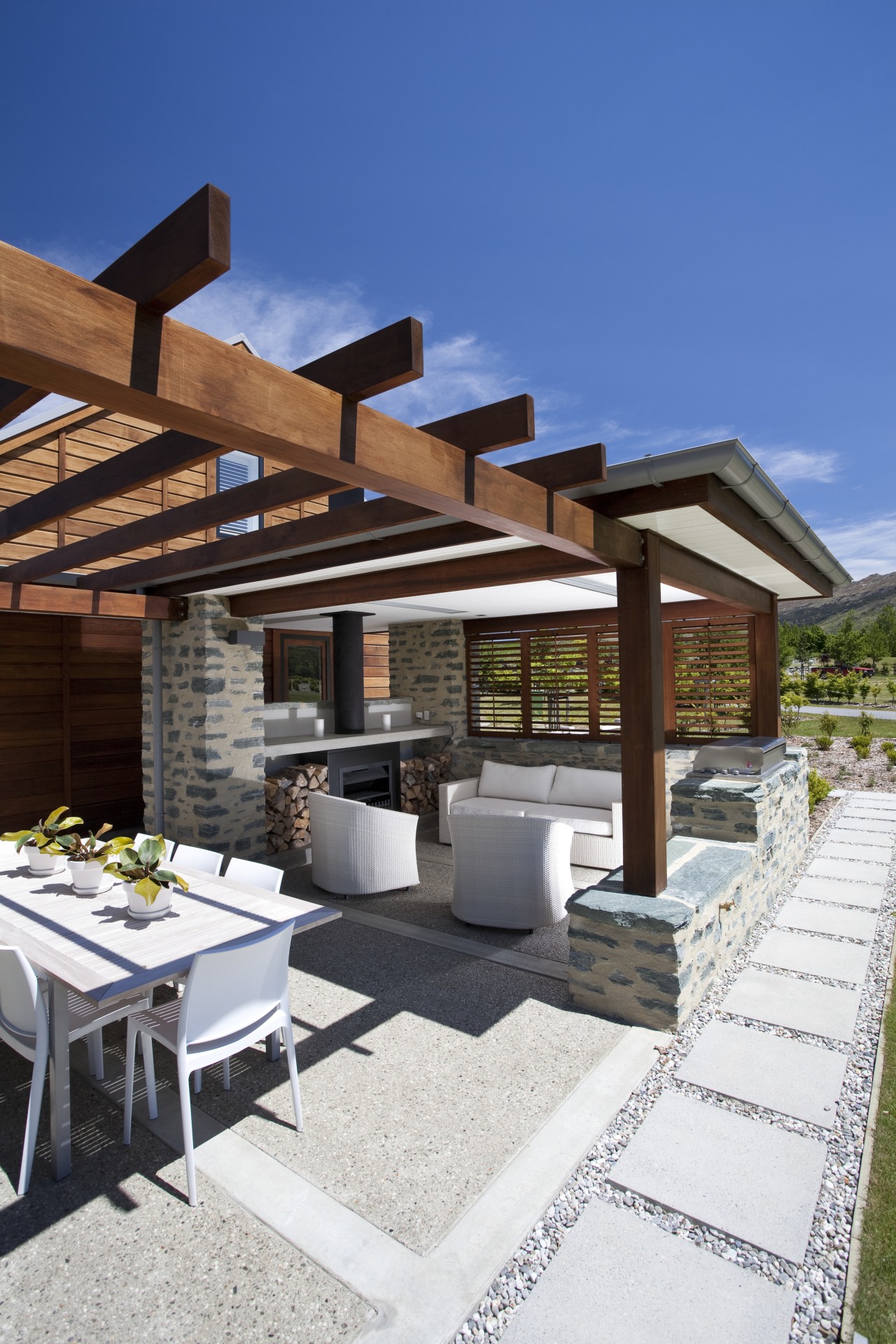
The architect says that the design team opted for a single-level design that would not be too dominant in scale.
"This development sits directly beyond the second hole of the new Coronet expansion of the Millbrook golf course, so it was crucial to provide an attractive, yet unobtrusive design," he says. "The single level dwelling also maximises the sun and outlook, and allows an interesting ceiling treatment."
Clad in local schist, plaster and cedar, the house comprises three gable-roof pavilions an open living wing, a more private bedroom wing and a garage with a loft bedroom. Limewashed wood ceilings follow the roof line and trusses are exposed to enhance the traditional character, and to provide a light and airy interior.
"Both the gabled ends of the living pavilion have full-height glazing to maximise the spectacular views and to allow natural light to penetrate the interior," says Whitaker.
The open living area runs the full length of the main pavilion, and includes a sunroom that projects out on the north side. The kitchen is positioned right in the centre, at the literal heart of the home.
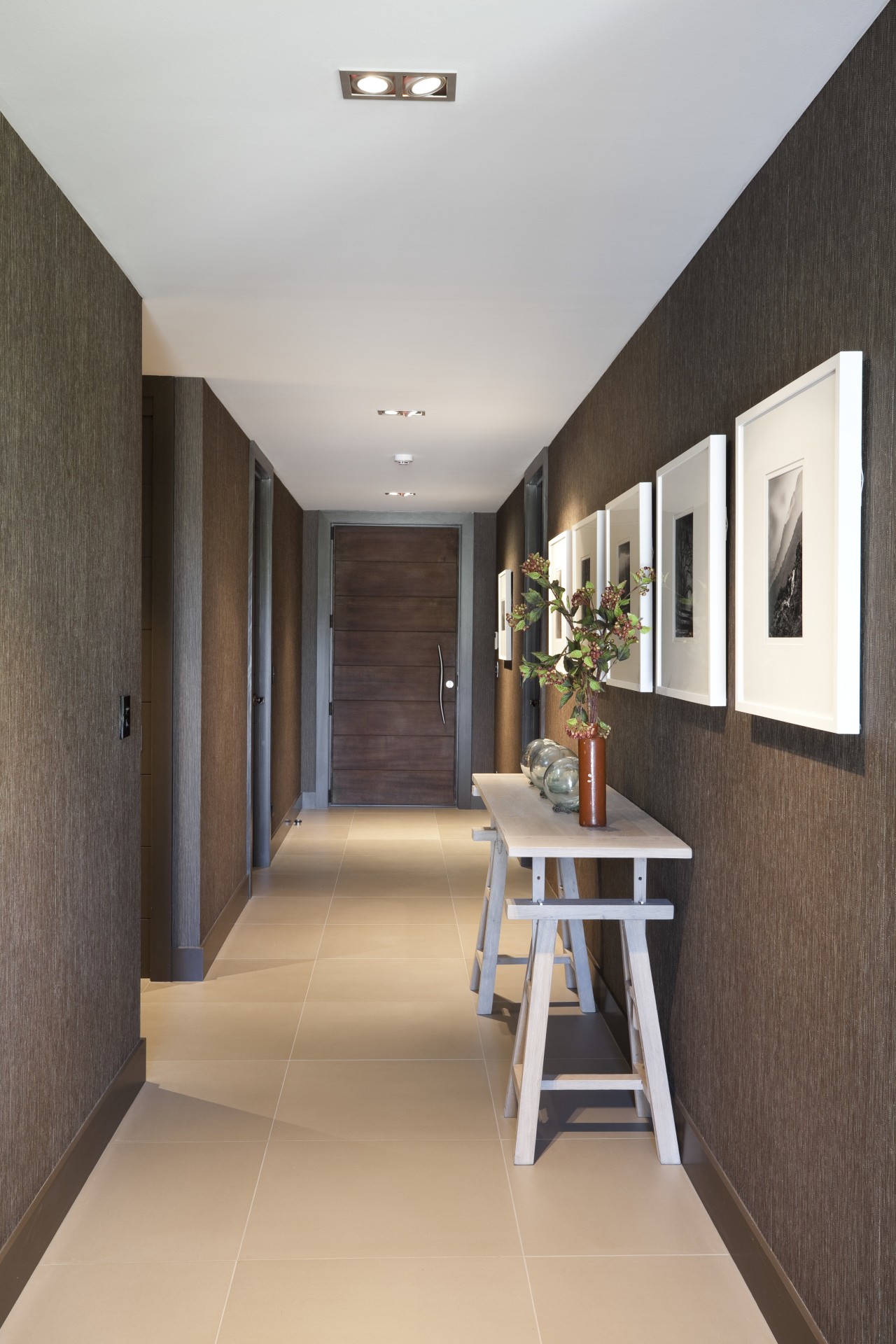
"We created very liveable, comfortable spaces that connect well to each other and to the outdoors," says Whitaker. "And all the pavilions open to an outdoor room a covered veranda with an outdoor fireplace and barbecue."
Semi-enclosed by low stone walls, this seating area has wooden shutters at one end, which provide shelter from the wind and help to control low evening sunlight.
The character of the architecture is reinforced by the interior design by Jean Foster of Foster and Burke Design. In the main living area the colours are soft and light, while the entrance hall features a textured paper in shades of brown. Foster says the doors were painted to match the paper, to avoid a jarring contrast.
"The deep colour creates an element of surprise as well, and is a perfect foil for a black and white photograph collection."
Credit list
of a Central Otago goldminers cottage Architect
Kitchen designer
Kitchen manufacturer
Roofing
Kitchen cabinets
Tapware
Kitchen accessories
Bath and basins
Lighting
Interior designer
Builder
Cladding
Outdoor kitchen
Benchtops
Refrigerator and dishwasher
Bathroom vanity
Story by: Colleen Hawkes
Photography by: Jamie Cobeldick
Home kitchen bathroom commercial design
